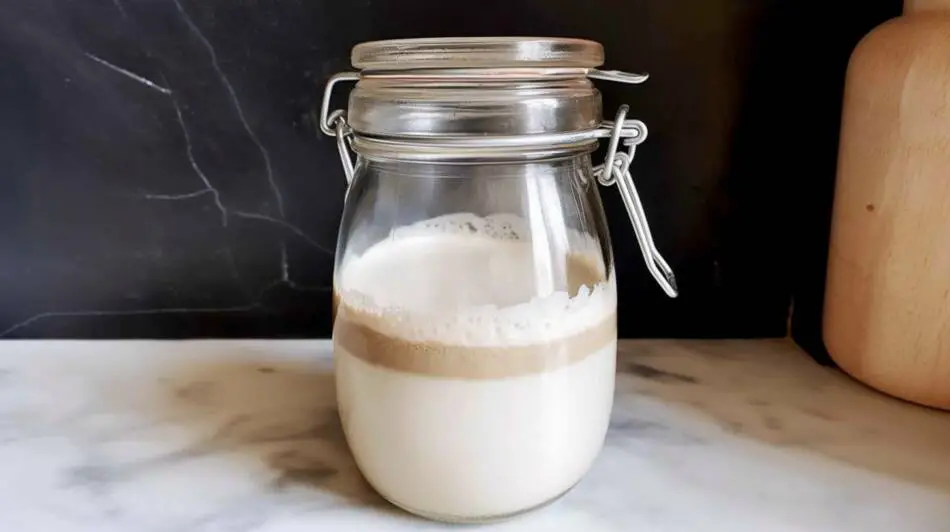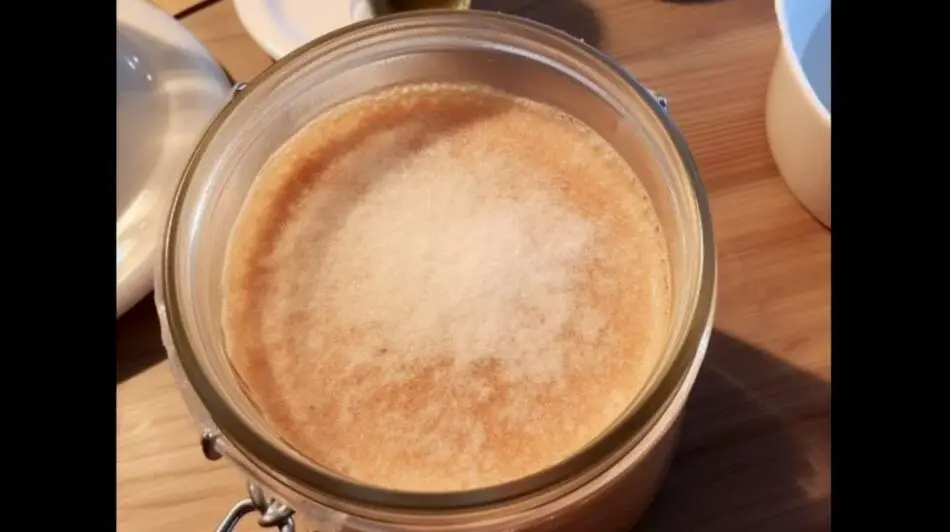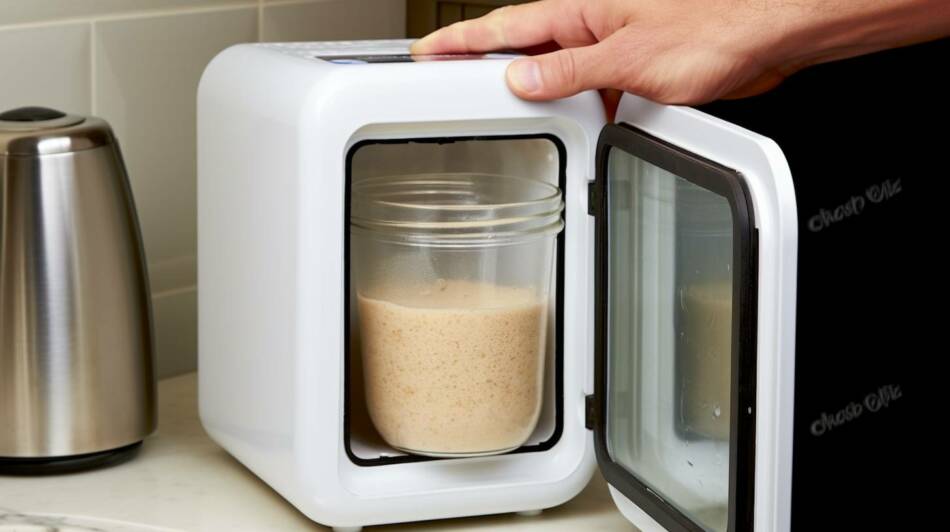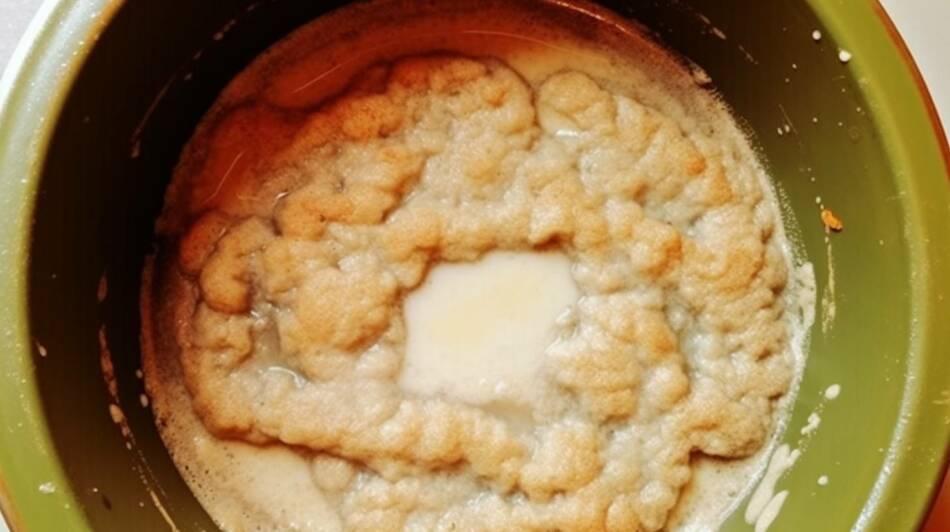Sourdough starters are resilient. They’re a complex web of wild yeast and bacteria that can withstand varying conditions. But what happens if your starter has been neglected and left inactive for an extended period? Can it be resurrected? This article dives into the topic of reviving a long-neglected sourdough starter.
An inactive sourdough starter may lack the desired leavening power for baking. However, with revival—by regular feedings and warmth—it can regain activity. If baking with an inactive starter, the rise may be compromised, and additional leavening agents might be necessary for optimal results.
1. Sourdough Starter’s Dormant State
Like many living entities, the microorganisms within a sourdough starter can also go into a sort of hibernation, especially when deprived of regular nourishment. While it might seem as though the yeast and bacteria have ceased their activities, they’ve merely entered a dormant state.
This state is a survival mechanism, allowing them to endure unfavorable conditions such as lack of food. It’s a misconception to perceive a dormant starter as a “dead” starter; in reality, with the right conditions and care, these microorganisms can spring back to life.
2. Signs of a Neglected Starter
When a starter has been left to its own devices without regular feedings, it starts to exhibit signs that indicate reduced microbial activity. Recognizing these signs can help bakers address the situation appropriately.
a. Lack of Bubbling
One of the first signs of a thriving sourdough starter is its bubbliness, attributed to the carbon dioxide produced by the active microorganisms. When these bubbles become scarce or disappear altogether, it’s a clear sign that the starter’s activity has dwindled.
b. Presence of Hooch

Over time, an unfed starter might begin to segregate a dark liquid layer at its top. This clear liquid, colloquially termed “hooch,” is an alcoholic byproduct of the fermentation process. While it might look concerning, it’s a natural occurrence in dormant starters. Hooch can be stirred back into the starter or poured off, depending on personal preference.
c. Shift in Scent
An active, healthy starter often carries a pleasant, tangy aroma—a mix of acidic and yeasty notes. However, when a starter is neglected, this aroma can intensify to a sharper acidic scent or even take on a cheesy or rancid undertone. This change in aroma is a clear indication that the starter needs attention and revival.
3. When Revival Might Not Be Possible
Sourdough starters are resilient, but they’re not invincible. There are circumstances where the best (and safest) course of action is to start afresh rather than attempting a revival.
a. Mold Infestation

If you notice unusual colors—blues, greens, pinks, or blacks—in fuzzy or distinct patches on your starter, that’s mold. Mold indicates contamination that’s not just surface-level, and it can pose health risks. While some bakers might try scraping off the mold and using the uncontaminated portion below, it’s often safer to discard the entire batch and start anew.
b. Odor Warning
A healthy sourdough starter has a pleasantly tangy, yeasty aroma. If your neglected starter emits an unusually foul, rotten, or distinctly off-putting scent, it’s a clear indication that something’s amiss. Such a smell might point to harmful bacterial contamination, making it prudent to discard the starter.
4. Reviving Your Neglected Starter
If you’ve determined your starter is salvageable (no mold and no bad smell), the resurrection journey can commence.
a. Initial Recovery Steps:
Begin by removing about 80% of the existing starter. This leaves behind a small portion that can be rejuvenated with fresh food.
Add equal parts of flour and water (by weight) to the retained 20% of the starter, maintaining a 1:1:1 feeding ratio. This reintroduces fresh food, vital for microbial revival.
After feeding, place your starter in a warm, consistent environment, ensuring that it’s not exposed to direct drafts or extreme temperature fluctuations.
b. Routine & Persistence:
Over the subsequent days, stick to a regimented feeding schedule—every 12 hours. This frequent feeding nourishes the slowly awakening microorganisms, boosting their activity levels.
Watch for bubbling and a growth in volume, both positive signs that your starter is coming back to life. Additionally, the aroma should start shifting from potentially off-putting to that familiar, appetizing sourdough tang.
c. Assessing Complete Recovery:
A fully revived starter will showcase its vigor by doubling or even tripling in volume between feedings, indicating that it’s ready for baking.
The sense of smell is a powerful gauge. As the starter returns to its full glory, it will exude that characteristic tangy sourdough fragrance, signaling that it’s back in optimal health and ready for your baking adventures.
Patience is Key. The revival process can take anywhere from a few days to over a week. Some starters bounce back quickly, while others take their time.
5. Preventing Neglect
a. Daily Routine
If you find yourself diving into sourdough baking often or even daily, make it a habit to feed your starter daily. Regular feeding keeps the microorganisms in the starter active and lively, ready to provide leavening power to your baking projects at any given time.
b. Refrigeration Strategy

For those who bake less frequently, daily feeding might seem excessive. In such cases, placing the starter in the refrigerator is a practical option. The cooler temperatures slow down the microbial activity, reducing the frequency of feedings needed. When refrigerated, a once-a-week feeding routine usually suffices to keep the starter healthy. Before using a refrigerated starter in baking, bring it to room temperature, feed it, and wait for it to show signs of activity.
c. Dried Sourdough Flakes
A smart strategy to ensure you’re never without a starter is to periodically dry some of it to create sourdough flakes or powder. Spread a thin layer of active starter on a parchment paper or silicone mat, allow it to dry thoroughly, then crumble it into flakes. Store these in an airtight container.
In times of need, these dried flakes can be rehydrated with water and fed with flour, acting as a starter’s phoenix rising from the ashes. This backup not only ensures you always have a starter at hand but also serves as a safety net should your main starter face any issues.
In Conclusion
While sourdough starters are hearty and can often be revived after periods of neglect, it’s essential to be mindful of their health. Consistent care yields the best results in terms of flavor and leavening power. However, if you find yourself with a dormant starter, remember that with patience and regular feedings, you can often breathe new life into it.

